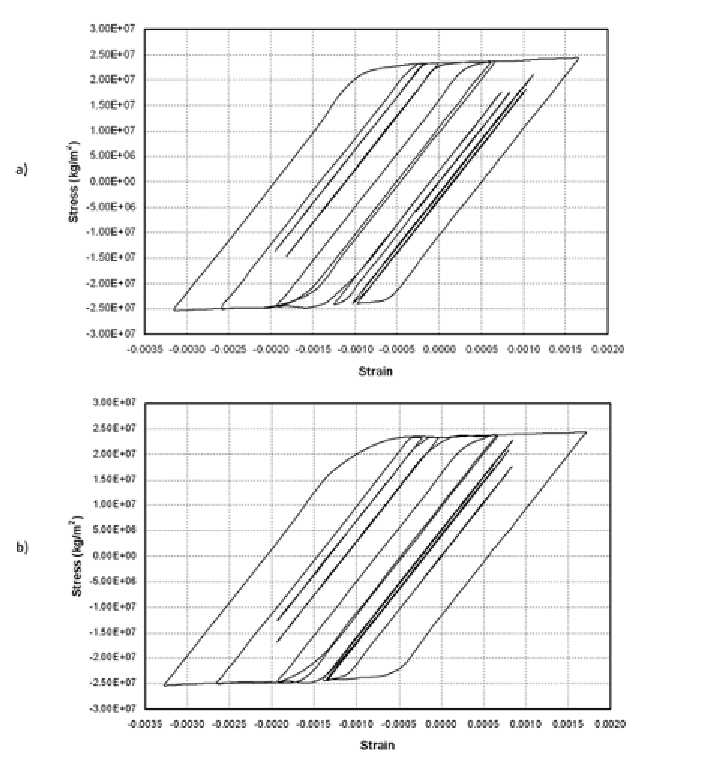Geology Reference
In-Depth Information
Figure 6. The stress-strain hysteretic curves of the element 14 of the optimal structures (a) CGA+HNNS
and (b) MCGA+HNNS
MCGA is proposed for performing optimization
task. The MCGA is a multi-stage optimization
algorithm based on renewing the population in
each stage using elitism. In order to mitigate the
computational rigors of the nonlinear time history
analysis, a hybrid neural network system termed
as HNNS is employed. The PNN and GRNN are
serially integrated in the framework of the HNNS.
By using the HNNS the necessary nonlinear time
history responses of the structures during the
optimization process are accurately predicted.
Optimization is achieved by CGA and MCGA
using exact and predicted structural nonlinear
responses. The numerical results imply that the
computational performance of the MCGA is better
than that of the CGA. Also it is observed that by
employing the HNNS the overall time of optimi-
zation is about 0.09 times of the time required by
exact optimization while the errors due to all the
approximations are small. Therefore, it can be
finally concluded that the proposed methodology
is a powerful tool to design optimization of struc-
tures subject to earthquake loading considering
nonlinear behavior.

Search WWH ::

Custom Search